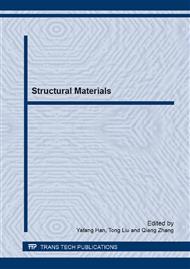p.346
p.351
p.357
p.362
p.367
p.372
p.378
p.384
p.390
Research on Deformation Permeability Changing Law during Snake Rolling Process
Abstract:
In order to refine the microstructure and improve the mechanical properties of the thicker steel plate, the large rolling reduction should be conducted. Confined to the biting angle of rolling mill, the maximum press quantity is constant. The research indicates that shear stress produced in the deformation region during snake rolling process is helpful and the snake rolling method can be used in the thick steel plate production. The effective strain of steel plate with various roller speed ratio, plate thickness, fraction and roller speed was determined by numerical calculation method. By comparison, the effective strain changing law was obtained. The calculation results indicate that compared to traditional rolling process, the effective strain produced in the plate can be improved with the increase of roller speed ratio, and the deformation permeability can also be improved.
Info:
Periodical:
Pages:
367-371
Citation:
Online since:
April 2014
Authors:
Price:
Сopyright:
© 2014 Trans Tech Publications Ltd. All Rights Reserved
Share:
Citation:


